Share
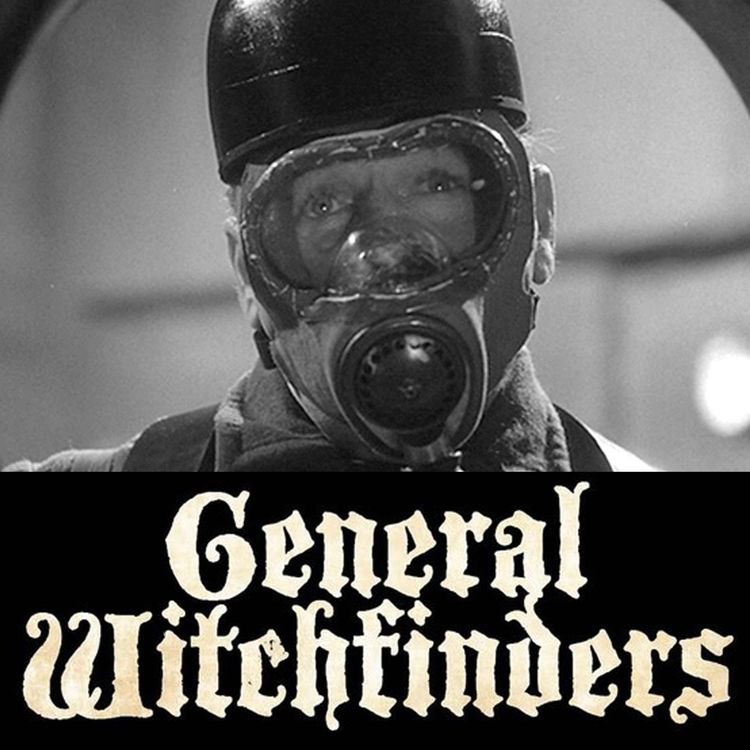
General Witchfinders
17 - Nigel Kneale's - Quatermass 2 / AKA The Enemy From Space
Quatermass 2 (a.k.a. Enemy From Space in the United States and Canada) is a 1957 black-and-white British science fiction horror film from Hammer Film Productions, directed by Val Guest, that stars Brian Donlevy, John Longden, Sidney James, Bryan Forbes, Vera Day, and William Franklyn.
Quatermass 2 is a sequel to Hammer's earlier film The Quatermass Xperiment, Like its predecessor, it is based on the BBC Television serial Quatermass II written by Nigel Kneale.
Brian Donlevy reprises his role as the eponymous Professor Bernard Quatermass, making him the only actor to play the character twice in a film. It is considered as the first film sequel to use the ‘2’ / ‘II’ suffix within the title.
The film's storyline concerns Quatermass's investigation of reports of hundreds of meteorites landing only in the Winnerden Flats area of the UK. His inquiries lead him to a huge industrial complex, strikingly similar to his own plans for a Moon colony. This top-secret facility is in fact the centre of a conspiracy involving the alien infiltration of the highest echelons of the British Government. Quatermass and his allies must now do whatever is necessary to defeat the alien threat before it is too late.
The first Quatermass film had been a major success for Hammer and, eager for a sequel, they purchased the rights to Nigel Kneale's follow-up before the BBC had even begun transmission of the new serial. For this adaptation, Nigel Kneale himself was allowed to write the first draft of the screenplay, although subsequent drafts were worked on by director Val Gues who directed the first Hammer Quatrmass. Guest once again employed many cinema vérité techniques to present the fantastic elements of the plot with the greatest degree of realism. Nigel Kneale was critical of the final film, mainly on account of the return of Brian Donlevy in the lead role. Kneale was unhappy with Donlevy's interpretation of the character and also claimed the actor's performance was marred by his alcoholism.
Although Quatermass 2 was financially successful, its box office performance was eclipsed by the massive success of another Hammer film, The Curse of Frankenstein, which was to be the first of their many Gothic horror films. (and the subject of our 2nd ever podcast episode) As a result it would be ten years before Hammer adapted the next Quatermass serial for the cinema with Quatermass and the Pit in 1967. Supposedly Quatermass 2 was originally shot in AnsaColor, developed by Agfa, but released in Black and White and it is said the colour negative still exists in the archives - although this could be a weird online hoax.
Something Horrific:
Whisper Down the Lane
by Clay McLeod Chapman
https://www.goodreads.com/en/book/show/55671294-whisper-down-the-lane
Cornish Horrors: Tales from the Land's End
by Joan Passey (Editor)
https://www.goodreads.com/book/show/58320855-cornish-horrors
Where Furnaces Burn
by Joel Lane
https://www.goodreads.com/book/show/16299282-where-furnaces-burn
$£$£$£$£$£$£$£$£$£$£$£$£$£$£$£$£$£$£$£$
Just in case anyone has too much money and wants to give a bit to us to help with our hosting n stuff. It would be amazing if you fancied sending us some pennies - thank you.
https://supporter.acast.com/general-witchfinders
$£$£$£$£$£$£$£$£$£$£$£$£$£$£$£$£$£$£$£$
More episodes
View all episodes
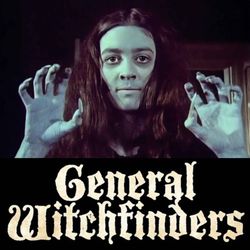
52. 52b - BBC Ghost Stories for Christmas: Lost Hearts
54:30||Season 1, Ep. 52The original run of A Ghost Story for Christmas aired on the BBC from 1971 to 1978, bringing classic ghost stories to television and keeping alive the tradition of sharing supernatural tales during the Christmas season. In our journey through the series, we’ve covered A Warning to the Curious and The Signalman in Episode 21, Whistle and I’ll Come to You and Stigma in Episode 32, and The Stalls of Barchester alongside The Treasure of Abbot Thomas in Episodes 41a and 41b. Just five days ago, on Christmas Eve, we delved into The Ash Tree. If you missed it, you can find it in our podcast feed. And tonight, as we stand on the brink of the space year 2025, we’re excited to bring you Lost Hearts. Written by Robin Chapman, produced by Rosemary Hill, and directed by the series' creator Lawrence Gordon Clark, Lost Hearts is based on the 1895 ghost story of the same name by M.R. James. It first aired on BBC1 on December 25, 1973, marking the first installment in the series to be broadcast on Christmas Day itself—and one of only three to ever air on that date. Robin Chapman also wrote 30 episodes of Tales of the Unexpected. (Seek out episode 29, where good old Bernard Cribbins makes an appearance.) The film features Joseph O’Conor as Mr. Abney. O’Conor lent his voice to the narrator in (the best Muppet movie) The Dark Crystal, played Mr. Brownlow in Oliver! (cue James mentioning the exclamation point here), and portrayed the Coroner in The Gorgon—but more on that soon. Simon Gipps-Kent plays Stephen, the young protagonist. Tragically, Gipps-Kent passed away at just 28 years old. However, in his brief career, he appeared in several notable films and TV shows of interest to our listener. He played Paul in The Tomorrow People, had a brief role in Quadrophenia, portrayed Seth in the Doctor Who serial The Horns of Nimon, and starred in something called A Traveller in Time from 1978. which was filmed at Babington House, a farmhouse owned by the parents of Blue Peter presenter Simon Groom. In 2018, Severn Film Productions released a new adaptation of Lost Hearts, directed by Max Van De Banks. This version updated the story to the 1940s (and later 1953). After the death of Stephen’s parents, the young boy is evacuated to the countryside during World War II. Unusually, this production was filmed in two parts: the main elements were shot in 2005, while the beginning and ending scenes were filmed in 2016. Louis Newton, who played Stephen in 2005, returned to portray him as a young man recounting the events to his bride-to-be ten years later.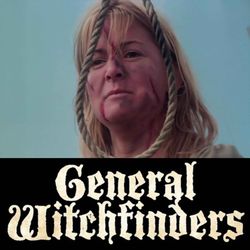
52. 52a - BBC Ghost Stories for Christmas: The Ash Tree
57:25||Season 1, Ep. 52A Ghost Story for Christmas is a series of annual British short films first broadcast on BBC One from 1971 to 1978, and sporadically revived by the BBC since 2005. With one exception, the original films were directed by Lawrence Gordon Clark and shot on 16 mm color film. The series aimed to adapt classic ghost stories for television, echoing the tradition of telling supernatural tales at Christmas. So far, we’ve covered A Warning to the Curious and The Signalman in Episode 21, Whistle and I’ll Come to You and Stigma in Episode 32, and The Stalls of Barchester along with The Treasure of Abbot Thomas in Episodes 41a and 41b.This year, we’re bringing you Lost Hearts on New Year’s Eve. But tonight, Christmas Eve—the traditional night for ghost stories—we’ll be discussing The Ash Tree. Written for the screen by David Rudkin and based on M.R. James’s short story, The Ash Tree was directed by Lawrence Gordon Clark. Looking back at Clark’s credits, it’s surprising we haven’t mentioned that he also directed one of our favorite monkey-man TV drama events from the 1990s—Chimera. That’s definitely something we should cover, assuming we can find a way to watch it. The Ash Tree aired on December 23, 1975, and featured Edward Petherbridge in the dual roles of Sir Richard and Sir Matthew. According to IMDb, Petherbridge began his career in 1961 and appeared in a wide range of film and TV roles. He’s apparently best known as the sharp and snooty sleuth Lord Peter Wimsey in The Dorothy L. Sayers Mysteries. Impressively, he kept working until 2017, with one of his final roles being the voice of a gentleman fish in one of Tim Burton’s Alice films.The cast also included Preston Lockwood as Dr. Croome, Barbara Ewing as Anne Mothersole, and, happily for our status as a secret Doctor Who podcast (though perhaps less happily for James), Lalla Ward as Lady Augusta. Barbara Ewing had an impressive career on the small screen, appearing in shows like Peak Practice, Casualty, The Bill, an episode of Hammer House of Horror, and even the Pertwee-fronted game show Whodunnit?. She also appeared in Chiller, a British horror/fantasy anthology series from 1995 that Ross has somehow never seen but seems to pop up constantly on people’s CVs. are you two aware of this and should we be covering it?) Beyond acting, Ewing is also an accomplished novelist, with nine books to her name. Her novel A Dangerous Vine even made the long list for the Orange Prize. Lalla Ward had a fascinating career trajectory. Her first film after leaving the Central School of Speech and Drama was Hammer’s Vampire Circus. She was close friends with Douglas Adams, who famously took her as his date to a screening of The Empire Strikes Back in the early 1980s. Adams also introduced her to her second husband, Richard Dawkins (for whom she would later provide illustrations for his controversial books), at his 40th birthday party—they were the only two who showed up on time! Of course, her first husband was Tom Baker, with whom she starred in Doctor Who as the second incarnation of the Time Lady Romana from 1979 to 1981. There really should be a General Witchfinders drinking game where you take a sip every time we mention someone in this next bit: In 2019, a modern-day audio adaptation of The Ash Tree was released by Bafflegab Productions. Written by Matthew Holness, it starred Amanda Abbington, Reece Shearsmith, and John Sessions.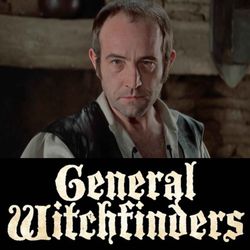
51. 51 - Captain Kronos – Vampire Hunter
01:31:03||Season 1, Ep. 51Captain Kronos – Vampire Hunter is a 1974 British swashbuckling action horror film, written and directed by Brian Clemens in his directorial debut. Clemens was celebrated for his work as a screenwriter, particularly for his contributions to British television series. Prior to Captain Kronos, he wrote and produced Dr. Jekyll and Sister Hyde for Hammer. Other films he wrote that fall into and circle around our areas of interest include And Soon the Darkness (which he wrote with Dalek creator Terry Nation), See No Evil (the 1971 Mia Farrow film,), The Golden Voyage of Sinbad, The Watcher in the Woods (one of Disney's forays into horror and one of Ross's all-time favorites), and one of the most bizarre sequels of all time—Highlander II: The Quickening. According to his son Samuel, Clemens' last words were, "I did quite a good job," spoken after watching an episode of The Avengers.In Captain Kronos, the titular character is played by Horst Janson, famous in Germany for his role in Salto Mortale, where he portrayed a trapeze artist. He later became familiar to younger audiences as "Horst" in Sesamstrasse, the German adaptation of Sesame Street, which he hosted from 1980 to 1983. The Captain's voice was dubbed in this film due to Janson's strong German accent, with Julian Holloway taking on the task. Holloway, who featured in eight Carry On films before moving into voice-over work, has recently voiced Prime Minister Almec and Admiral Kilian in Star Wars: The Clone Wars. He also appeared in Doctor Who's last story of the classic era, Survival. In 1976, he had a brief relationship with Tessa Dahl, daughter of Patricia Neal and Roald Dahl, which produced one daughter, the author and former model Sophie Dahl, who was born the following year. The supporting cast includes John Carson as Dr. Marcus, a physician who enlists Kronos's help to investigate strange deaths in his village. Carson, often noted for his voice that bears a striking resemblance to James Mason’s, was a Hammer regular with appearances in Taste the Blood of Dracula and The Plague of the Zombies. Caroline Munro appears as Carla, a Romanian girl who becomes Kronos's feisty sidekick. Known for her glamorous looks, Munro rose to fame as the "Lamb's Navy Rum" poster girl, a role she held for ten years. She initially caught Hammer’s attention through her work on The Abominable Dr. Phibes, where she played Vincent Price's silent, deceased wife, and its sequel Dr. Phibes Rises Again (check out episode 10 for our review of the first of those two "classics"). As well as this film, she of course appeared in the subject of our very first podcast episode, Dracula A.D. 1972. Outside Hammer, Munro went on to play the slave girl Margiana in The Golden Voyage of Sinbad, the princess in At the Earth's Core, and the deadly Bond girl Naomi in The Spy Who Loved Me, turning down the role of Ursa in Superman to accept it. The film’s score was composed by Laurie Johnson, who, from the 1960s to the 1980s, composed over fifty themes and scores, including the theme used on This Is Your Life (entitled "Gala Performance"), The Avengers (from 1965), Animal Magic (entitled "Las Vegas"), Jason King, The New Avengers, and The Professionals. Though Captain Kronos was shot in 1972, it was delayed and eventually released in 1974. The film was intended to kick off a series featuring Kronos and his companions, but no sequels were made—although there have been a number of follow up comic book adventures.
50. 50 - Doctor Who - The Dæmons
01:50:12||Season 1, Ep. 50The Dæmons is the final story in the eighth season of Doctor Who, with Jon Pertwee playing the eponymous hero (see episode 48 covering The House That Dripped Blood for some fantastic Pertrivia). It aired over five weeks on BBC1 from 22 May to 19 June 1971. In The Dæmons, the Master, played by Roger Delgado, awakens the ancient horned alien Azal, hoping to gain his immense power. Delgado, a close friend of Pertwee, worked extensively on stage, TV, film, and radio. His work included the BBC’s Quatermass II, Battle of the River Plate, Hammer's The Mummy's Shroud, and English dubbing for The Horror Express (see episode 7). He often played villains in British action-adventure series like Danger Man, The Saint, The Champions, and Randall and Hopkirk (Deceased). Tragically, Delgado died in a car accident in Turkey while filming a Franco-German mini-series. He was only 55 years old. The Dæmons began as an audition scene for Jo Grant, played by Katy Manning, and was later reworked into episode four. Manning attended Miss Dixon and Miss Wolfe's School for Girls, becoming close friends with Liza Minnelli. She socialized with stars like James Mason, Dirk Bogarde, and had tea with Noël Coward at The Savoy. As a teenager, she modeled for Biba and dated Jimi Hendrix, Richard Eyre, David Troughton, Derek Fowlds, Stewart Bevan, and Peter Bardens, Rod Stewart’s keyboard player. Manning had a close bond with Pertwee, who would pick her up daily for filming, either in his car or on his motorbike, where she would ride pillion. They even raced with Dick Emery and Sir Ralph Richardson to see who could reach the BBC studios first. After three years on Doctor Who, Manning left to pursue other acting work. Pertwee was saddened by her departure, citing her exit and Delgado’s death as two major reasons for leaving the show a year later. Producer Barry Letts wanted to write a story about black magic to tap into the zeitgeist of the Age of Aquarius and frighten young viewers. However, script editor Terrance Dicks had concerns it might be seen as Satanist. The story was revised to focus on a scientific threat with occult themes. Originally, the Master was to worship the demon in a church, but to avoid offending religious viewers, the scenes were moved to a crypt, later referred to as a cavern (though the set remained crypt-like). Letts co-wrote the script with playwright Robert Sloman under the pseudonym Guy Leopold, as the BBC frowned on production staff writing for their own shows. Much of the serial was filmed on location in Aldbourne, Wiltshire, with two weeks allocated for filming—more than double the usual time—leading to more outdoor scenes. The cast included comedy actress Damaris Hayman, who starred as Miss Hawthorne. Hayman had an interest in the supernatural and served as an unofficial adviser on the production. Her friend, a practicing witch, praised the accuracy of the scripts. Future Sooty puppeteer Matthew Corbett had a brief role in the final episode as a hooded coven member who objects to Jo’s sacrifice. Corbett, whose great-uncle was Harry Ramsden of fish-and-chip fame, had to change his name when joining the actors' union Equity, as there was already a Peter Corbett registered.Studio taping for The Dæmons was completed on 16 May 1971, just weeks before the final episode aired. This episode included footage of a model church being blown up, which was so realistic that it prompted viewer complaints. If the clip of the Brigadier's helicopter crashing into the heat shield looks familiar, it was borrowed from the James Bond film From Russia with Love.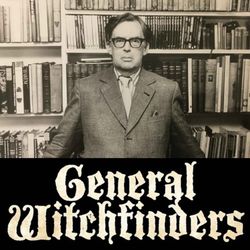
49. 49 - Robert Aickman's - Ringing the Changes
01:13:24||Season 1, Ep. 49This time, we listened to and read Ringing the Changes by Robert Aickman. Robert Fordyce Aickman was an English conservationist and writer. As a conservationist, he played a key role in preserving and restoring England's inland canal system. As a writer, he is best known for his supernatural fiction, which he described as "strange stories."On his mother’s side, Aickman was the grandson of the prolific Victorian novelist Richard Marsh. Marsh is known for his occult thriller The Beetle, a book as popular in its time as Bram Stoker's Dracula. Aickman is best known for his 48 "strange stories," published across eight volumes.Podcast favorite Jeremy Dyson has adapted Aickman’s work in various forms. Listen to episode 8 for our most in-depth look at Jeremy’s work. A musical version of Aickman’s short story The Same Dog, co-written by Dyson and Joby Talbot, premiered in 2000 at the Barbican Concert Hall.In 2000, Dyson, along with his League of Gentlemen collaborator Mark Gatiss, adapted Ringing the Changes into a BBC Radio Four play, airing exactly twenty years after the CBC adaptation. This adaptation was intended to start a tradition of 'An Aickman Story for Halloween,' but unfortunately, it did not continue. Dyson also directed a 2002 short film based on Aickman’s story The Cicerones, with Gatiss as the principal actor.It is this Dyson/Gatiss adaptation that we listened to for this episode. (Thanks to ‘Mysterious Magpie’ for putting this up on YouTube so we could listen to it)The cast includes George Baker as Gerald. Baker is known for his roles in The Dam Busters as Flight Lieutenant D. J. H. Maltby, Tiberius in I, Claudius, D.C.I. Wexford in The Ruth Rendell Mysteries, Decider Logrin in the Doctor Who story Full Circle, and appearances in two James Bond films. Fiona Allen plays Phrynne. Allen is an actress and writer known for 24 Hour Party People, Smack the Pony, and Poirot. She has been married to Michael Parkinson since April 2001. This surprised Ross when writing this until he discovered it wasn’t ‘That’ Michael Parkinson (see episode 18 of this podcast for more about him). Instead, it’s the patronymic son of the chat show legend, whom she met while he was working as a location manager on Smack the Pony. Confused? I am! Friend of the show Mark Gatiss appears as the Narrator and Mr. Pascoe, the landlord. Commandant Shortcroft is played by Michael Cochrane, known for his role in 280 episodes of The Archers, Arnold (Private Godfrey) Ridley in We’re Doomed! The Dad’s Army Story, and for playing three different characters in three different episodes of Heartbeat.Barbara Shelley plays Mrs. Pascoe. Known to our podcast listeners for her portrayal of Barbara Judd in the Hammer version of Quatermass and the Pit (reviewed in episode 34), she also starred in The Village of the Damned (which we need to review soon), Dracula: Prince of Darkness (one of the Dracula films we still need to cover), Rasputin: The Mad Monk, The Gorgon, and the 1958 Hammer wannabe Blood of the Vampire, written by Jimmy Sangster. She also appeared in both Blake’s 7 and Doctor Who— as I'm sure James is dying to know, we can tell you she played Sorasta in Planet of Fire and was considered for the role of Tanha in Snakedance… but that’s enough Doctor Who for now…
48. 48 - The House that Dripped blood
01:20:00||Season 1, Ep. 48"The House That Dripped Blood" is a 1971 British anthology horror film directed by Peter Duffell and distributed by Amicus Productions. The film is a collection of four short stories, each concerning a series of inhabitants of the eponymous building. Denholm Elliott appears in the segment "Method for Murder," playing Charles Hillyer. He is joined by Joanna Dunham, who portrays Alice Hillyer, Charles' wife. Peter Cushing stars in the segment "Waxworks," portraying Philip Grayson. Joss Ackland (known for "Lethal Weapon 2," "Watership Down," and "Bill and Ted's Bogus Journey," among over 100 other films) plays Neville Rogers, Grayson's friend. Wolfe Morris appears as the Waxworks Proprietor. Christopher Lee appears in the segment "Sweets to the Sweet," playing John Reid. He is joined by Nyree Dawn Porter (star of "The Forsyte Saga," who turned down the lead female role in "The Avengers") as Ann Norton, the tutor hired to care for Reid's daughter. Jon Pertwee features in the segment "The Cloak," portraying Paul Henderson. Ingrid Pitt plays Carla Lind, Henderson's co-star and love interest in the vampire film they're working on. All of the stories were written by Robert Bloch, best known as the writer of "Psycho." Bloch wrote hundreds of short stories and over 30 novels and was a protégé of H. P. Lovecraft. Amicus films are sometimes mistaken for the output of Hammer Films due to their similar visual style and use of some of the same actors. However, unlike the period gothic Hammer films, Amicus productions were usually set in the present day. In the Second World War, Denholm Elliott (famous to this podcast for his titular role as the Signalman in the BBC "Ghost Story for Christmas," podcast episode 21) joined the Royal Air Force, training as a wireless operator/air gunner in 1942. His aircraft was hit by flak and subsequently ditched in the North Sea. Elliott and four of his crewmen survived, and he spent the rest of the war in Stalag Luft VIIIb, a prisoner-of-war camp. Later, Pertwee was attached to the top-secret Naval Intelligence Division, working alongside future James Bond author (and of course Big Chris Lee’s cousin) Ian Fleming and reporting directly to Prime Minister Winston Churchill. In 1967, he was chosen by "Dad's Army" producer David Croft for the role of Captain Mainwaring, but Pertwee turned it down. In 1969, Pertwee asked his agent to apply for the role of Doctor Who and was surprised to find he was already on the shortlist. He was the second choice for the role; Ron Moody was the first but was unavailable. Jon Pertwee later claimed that "The House That Dripped Blood" was meant to be a comedy-horror film and was initially filmed in that way. However, during the production, "the producer came in, took one look at what we are doing, and went raving mad," insisting it be a horror film and not a comedy. This change meant a shift in tone, but the material already filmed remained, resulting in the film dipping in quality and edits to remove comedy elements from Pertwee's sequences. He also admitted that he intentionally based his character on his co-star and friend Christopher Lee. In a scene where Jon's character talks about favourite roles, he says that he prefers Bela Lugosi's Dracula rather than "the chap who plays him nowadays."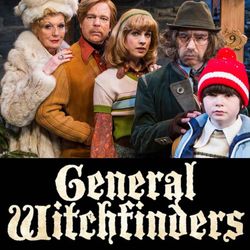
47. 47 - Inside Number 9 - The Devil of Christmas
01:19:09||Season 1, Ep. 47Inside No. 9 is a British black comedy anthology series that aired from February 5, 2014, to June 12, 2024. Written by Steve Pemberton and Reece Shearsmith and produced by the BBC. The only recurring elements are a setting related to the number 9 and a hidden brass hare statue. The show blends comedy, horror, and plot twists. The episode we watched, "The Devil of Christmas," is a Christmas special and the first episode of the third series, aired on December 27, 2016. Directed by Graeme Harper and written by Pemberton and Shearsmith, it took heavy inspiration from 1970s anthology programs such as Beasts (see episode 27 and 44 a and b), and Tales of the Unexpected (listen to episode 29 for more details), filmed at Studio D in the BBC Elstree Centre with rented 1970s costumes and props, the production used retrofitted 1970s cameras and lighting. This approach differed from the usual single-camera setup of the series. Producer Adam Tandy noted the blend of heritage and modern technology, while Shearsmith remarked "it looks shit, but it's brilliant". Graeme Harper, the episode's director, is well-known for his work on Doctor Who, being the only person to direct both the original and revived series. Harper's direction was widely acclaimed, with Peter Davison praising him as the best director he worked with on Doctor Who. The episode featured Rula Lenska, born Roza Maria Leopoldyna Lubienski, who has appeared in Special Branch, Minder, Boon, The Detectives, Footballers' Wives, To the Manor Born, One Foot in the Grave, Casualty, Space: 1999, Return of the Saint, Robin of Sherwood, Doctors, and EastEnders, where she played Frank Butcher's girlfriend, Krystle, in a 2002 Costa del Sol special. In the 1970s, she was shortlisted for the role of companion Jo Grant in Doctor Who and later appeared in Resurrection of the Daleks. She starred as Mrs. Peacock in series 2 of Cluedo and appeared with John Inman in the series Take a Letter, Mr. Jones. In 2009, Lenska joined the cast of Coronation Street as Claudia Colby, an old friend of Audrey Roberts. She left in May 2011 to join the Calendar Girls tour. Lenska was married to actors Brian Deacon and Dennis Waterman, with both marriages ending in divorce. She appeared in commercials for Alberto VO5 in the US during the late 1970s, becoming a running joke on Johnny Carson's The Tonight Show. Her work with the London Gay Men's Chorus led to her participation in the UK version of Celebrity Big Brother in 2006, where she made headlines for a role-play task with George Galloway. Since today's topic was a last-minute change to our schedule, we didn't have much time to research Steve and Reece thoroughly. I’m sorry we don’t have more to share about them, but they seem like really nice guys. Both, along with the other two members of the League of Gentlemen, consistently create content that we pretty much universally like, if not love. (Ross is speaking for himself here, but I think Jon and James would agree.) This episode also features the voice of Sir Derek Jacobi, Professor Yana himself!!!!. Due to time constraints, our research for this episode was limited. We'll need to cover another project featuring Derek so we can properly explore the life and work of this wonderful actor. If you have any suggestions, please tweet us @GeneralWitch1. In May 2024, it was announced that Pemberton and Shearsmith had adapted the series into a West End stage play, Inside No. 9 Stage/Fright. They will perform in the production, premiering in January 2025 at Wyndham's Theatre, London. (Ross and his wife have tickets to go in April!)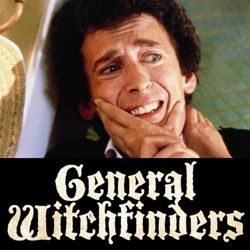
46. 46 - The Survivor (based on the James Herbert Novel)
01:49:24||Season 1, Ep. 46Intro music from:Arthemis - Survivor (Destiny's Child Cover)https://www.youtube.com/watch?v=xjYCOtYjCY4The Survivor is a 1981 supernatural horror Australian-British co-production directed by David Hemmings and starring Robert Powell, Jenny Agutter, and Joseph Cotten.In Adelaide, Australia (not Eton in the UK as in the original novel written by James Herbert), airline pilot David Keller (played by Powell) survives the crash of his Boeing 747-200, unhurt despite all 300 passengers dying in the accident. With no memories of the accident, he starts to suffer strange supernatural visions.Director David Hemmings is most famous for his acting roles, including Dildano in Barbarella, Marcus Daly in Dario Argento's Deep Red, and Thomas, the fashion photographer in the hugely successful avant-garde mystery film Blowup – a role turned down by Sean Connery because director Michelangelo Antonioni would not show him the full script but only a seven-page treatment stored in a cigarette packet. Hemmings would later feature in The League of Extraordinary Gentlemen with Connery 37 years later.Robert Powell, best known for his portrayal of a charismatic cult leader/son of a carpenter in the 1977 epic television drama series Jesus of Nazareth, also played secret agent Richard Hannay in The Thirty-Nine Steps, appeared in Ken Russell's Tommy as Captain Walker and, at the request of his friend and golf partner, comedian Jasper Carrott, co-starred in the BBC sitcom The Detectives (which ran for five series!). He also lent his voice to the 2002 rock opera The Hound of the Baskervilles by Clive Nolan and Oliver Wakeman, playing John Watson. Powell was considered for several roles in Lifeforce (featured in episode 39 of this podcast). A founder member of the Social Democratic Party in 1981, he campaigned alongside Barry Norman on behalf of the party's first leader, Roy Jenkins.Jenny Agutter (OBE), who plays the role of Hobbs the clairvoyant (a male character in the novel), is best known for her ongoing role in the inexplicably popular Call the Midwife. She also starred in two adaptations of The Railway Children, the critically acclaimed film Walkabout, and, relevant to this podcast, An American Werewolf in London (listen to episode 26 for more info). The film also features Joseph Cotten, (best man at Orson Welles's wedding to Rita Hayworth) appeared in five films selected for the National Film Registry by the Library of Congress for being "culturally, historically or aesthetically" significant. In addition to these classics, he appeared in many films and TV programs, including, pertinent to this podcast, one episode of Tales of the Unexpected. He later admitted, "I was in a lot of junk. I get nervous when I don't work." This was his final motion picture, suffering a stroke shortly after working on it.James Herbert, author of the source novel, sent a note to David Hemmings offering his assistance. He never received a reply, and in 1988 dismissed this film and the later Deadly Eyes (the film adaptation of The Rats) as "They're terrible...absolute rubbish. I can only say - don't blame me." The Survivor was Herbert's third novel, published in 1976, coming after The Rats and The Fog.The music for this film is by Brian May! …but not the one you're thinking of... This is the Australian Brian May, who has an impressive musical CV, including: The Blue Lagoon, Gallipoli, Mad Max, Mad Max 2: The Road Warrior, Missing in Action 2 and Freddy's Dead: The Final Nightmare.This was the first Australian movie to cost more than $1 million (Australian) to make. The location was shifted to OZ as a complex tax dodge, allowing English investors to completely write-off on the whole film.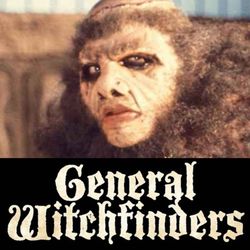
45. 45 - Frankenstein and the Monster From Hell
01:30:00||Season 1, Ep. 45We return to Hammer Productions with Frankenstein and the Monster From Hell, filmed at Elstree Studios in 1972. It marked the final chapter in the Hammer Frankenstein saga and director Terence Fisher's last film. The Film Features: Peter Cushing in his sixth and final portrayal of Baron Victor Frankenstein, a part he originated in 1957's The Curse of Frankenstein. Despite being 59 and apparently in poor health when he made this film, Cushing still insisted on performing a stunt requiring him to leap from a tabletop onto the hulking creature's back, spinning wildly in circles to subdue the monster gone amok with a sedative. Shane Briant as Dr. Simon Helder, best known for his four Hammer appearances, including this film and Demons of the Mind, Straight on Till Morning, and Captain Kronos - Vampire Hunter (coming soon from General Witchfinders). He reprised the role of Simon Helder years later in the film Sherlock Holmes vs. Frankenstein. Madeline Smith as Sarah "Angel" Klauss. Also seen in Hammer's The Vampire Lovers, Taste the Blood of Dracula, Tam-Lin, and Theatre of Blood, she went on to become the first Bond girl of the Roger Moore era, Miss Caruso, in the post-opening titles sequence of Live and Let Die (infamous for the scene where Bond unzips her dress with a magnetic wristwatch). After taking a break from acting to raise her daughter, she is still working now at the age of 74, recently appearing in Mark Gatiss's The Amazing Mr. Blunden. And of course, the main event... the feature creature... we have Dave ("Dave Prowse IS Darth Vader") Prowse as the Creature / Herr Schneider. Actor, bodybuilder, and strongman Dave Prowse carved a unique path in film history. He's best known for portraying Darth Vader (voiced by American actor James Earl Jones) in the original Star Wars trilogy. However, his career stretched far beyond that iconic role. He was a familiar face in the UK as the Green Cross Man, promoting road safety for children. However, in a recurring snub to the beautiful West Country accent, the first two adverts in the series had Prowse's voice dubbed by another actor. Thankfully, he appeared using his own voice in the third advert. Dave won the British heavyweight weightlifting championship for three consecutive years (1962-1964). Leading him to compete for England in the 1962 Commonwealth Games. During his bodybuilding training, he befriended future action stars Arnold Schwarzenegger and Lou Ferrigno. His role as the manservant in Stanley Kubrick's 1971 film, "A Clockwork Orange," caught the eye of Star Wars director George Lucas, which led him to the defining role of Darth Vader. Throughout his film and TV career, Prowse was often typecast with parts such as the circus strongman in Vampire Circus, a Minotaur in (Doctor Who Klaxon)'The Time Monster,' and an android named Coppin in The Tomorrow People. He supposedly came close to iconic roles, claiming to have nearly landed the part of Jaws in James Bond and being considered for Conan the Barbarian before those parts went to other actors. We are told that Prowse lobbied for the role of Superman in Richard Donner's 1978 film. In a television interview, he recounted his response to being told "we've found our Superman" with a simple "Thank you very much," only to then learn Christopher Reeve had been chosen and Prowse would be his trainer. Finally, it's worth noting that David Prowse made his second appearance as a Frankenstein laboratory creation in this film, his first being in The Horror of Frankenstein (uncredited cameo in 1967's Casino Royale aside). He holds the distinction of being the only actor to play a Hammer Frankenstein's monster more than once.